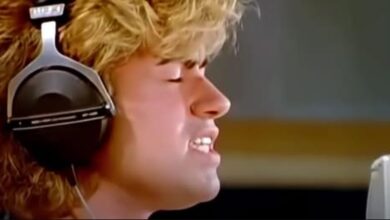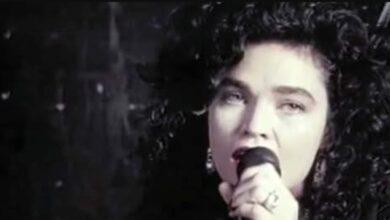The Doobie Brothers: What A fool Believes (1979) Classic Rock R&B, and Pop
“What a Fool Believes” is a classic hit by The Doobie Brothers, released in 1979 as part of their album “Minute by Minute.” The song, co-written by Michael McDonald and Kenny Loggins, stands out as one of the band’s most successful singles. It showcases a unique blend of classic rock, R&B, and pop elements, reflecting the diverse musical influences that shaped The Doobie Brothers’ sound during this era.
Michael McDonald’s distinctive lead vocals, coupled with the intricate instrumentation, contributed to the song’s widespread appeal. “What a Fool Believes” reached number one on the Billboard Hot 100 in April 1979, marking a significant achievement for the band. The track also earned the Grammy Awards for Record of the Year and Song of the Year in 1980, solidifying its place in music history.
The song’s lyrics tell the story of a man who reminisces about a past romantic encounter, convincing himself that there was more to the relationship than there actually was. This theme of self-deception and unreciprocated love resonated with many listeners, adding to the song’s emotional depth and relatability.
Musically, “What a Fool Believes” is characterized by its smooth, polished production and complex chord changes, which were innovative for the time. The use of the Oberheim synthesizer, played by Bill Payne alongside McDonald, added a distinctive texture to the arrangement. The song’s sophisticated harmony and rhythmic drive exemplify the band’s ability to fuse rock with soulful R&B grooves.
The song’s commercial success was not limited to the United States; it also topped charts in Canada and performed well internationally, reaching high positions in countries like New Zealand and the Netherlands. This global appeal further underscored the universal themes and accessible sound that The Doobie Brothers crafted with this track.
Kenny Loggins, co-writer of the song, originally performed a version that featured a slightly different lyrical perspective, highlighting the collaborative nature of its creation. Over the years, “What a Fool Believes” has been covered by numerous artists, including Aretha Franklin, whose rendition brought a different flavor to the song’s narrative.
The Doobie Brothers, originally formed in San Jose, California, experienced a significant lineup change when Michael McDonald joined the band in the mid-1970s. His influence steered the group’s sound towards a more soulful direction, which is evident in “What a Fool Believes.” This period marked a high point in the band’s career, with McDonald’s contributions playing a crucial role in their continued success.
The song’s enduring popularity is a testament to its well-crafted melody, poignant lyrics, and the impeccable musicianship of The Doobie Brothers. It remains a staple of classic rock and continues to be celebrated by new generations of music lovers.
Overall, “What a Fool Believes” is a shining example of The Doobie Brothers’ ability to blend various musical styles into a cohesive and compelling work. Its success paved the way for future explorations in the fusion of rock and R&B, influencing countless artists in the decades that followed. The song’s legacy is a fitting tribute to the band’s innovative spirit and their contributions to the music industry.





